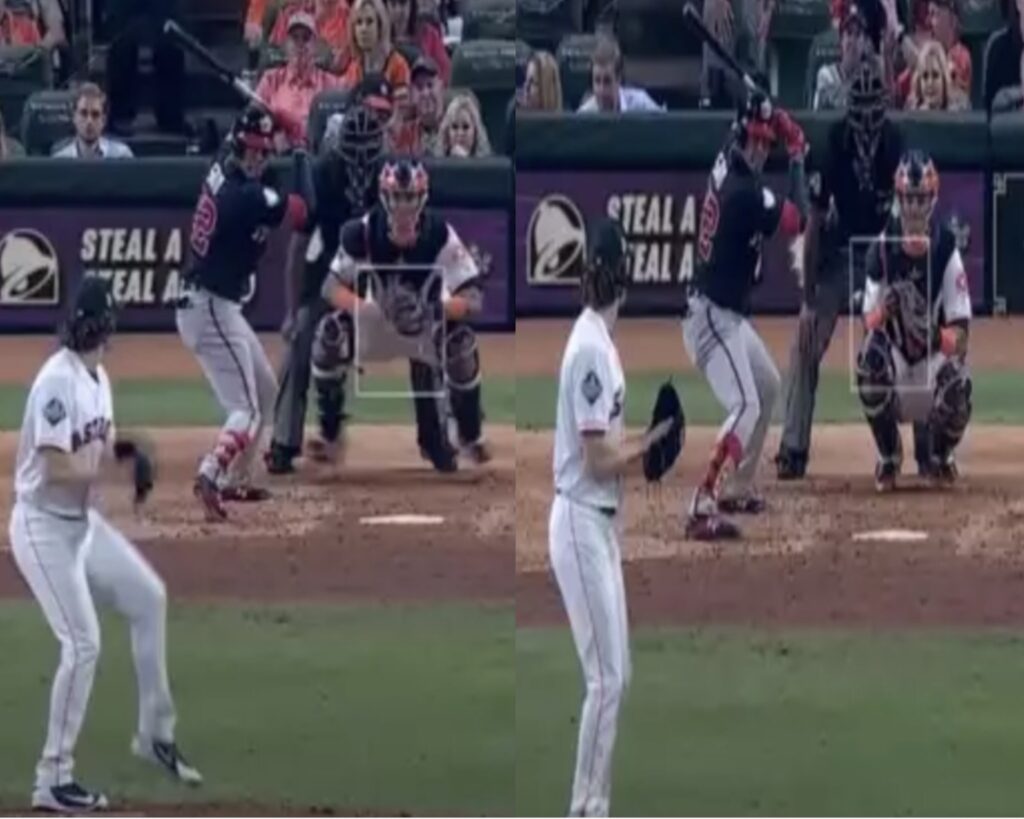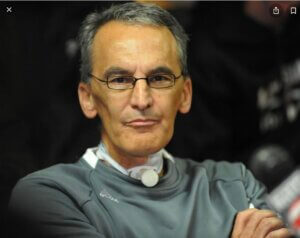
Hitting is difficult. Pitching will always dominate hitters and hitters will always struggle especially if hitters cannot figure out timing adjustments, hitting plans & approaches, and consistent swing mechanics to be on time.
2 strike hitting is:
- plate discipline;
- the ability to use the whole field;
- being able to adjust your pelvis load/coil to be able to recognize and handle BOTH velocity and off-speed;
- the hitter’s ability to know ”how” and ”when” to transition from ”loading/coiling” into the ”launch”;
- being able to hinge early but coil late – managing your tempo and timing via your pelvis with an integrated spine;
- being able to create a ”buffer” from load/coil til start of rotation;
- having great ”transfer mechanics”; and
- IT’S A MINDSET.
The ability to hit with 2 strikes is a forgotten SKILL; & I’m not talking about choking up and punching at the pitch & being satisfied with just putting the ball in play either. Or the OLD SLASH move — FAKE BUNT & SWING —show bunt, pull back and swing down or slash/slap at the pitch.
MLB as a whole this past season had a batting average of .151 with 2 strikes. With all of the infield shifts, it amazes me that professional hitters, either cannot or will not “GO THE OTHER WAY” with two strikes especially when NOBODY IS THERE.
Is it because they do not know HOW TO DO IT? Or what mechanical adjustments to make? Do professional hitters today know how to create a ”buffer” and add more STABILITY (feel LATE) to regulate & adjust when they transition from coil to rotate based on the count or game situation?
Listen to Joey VOTTO (below) advising all young hitters to learn the skill to hit to all parts of the field and not to just be one-dimensional.
There are 12 potential counts that a hitter can be faced with ranging between 0-0 to 3-2. Any count where the hitter has 2 strikes against them, calls for its own plan and approach. The plan should NEVER require a “defensive mindset” – a hitter should ALWAYS BE ATTACKING & HACKING, in other words, being the “aggressor”.
In fact, in a two strike count, the hitter needs to be more determined and more committed and take on a BRAWLER MENTALITY. It’s time to fight because your back is up against the wall; it is NOT the time to get defensive and TRY not to strike out , or go into this CHASE mode.
Elite hitters all know how to create BUFFER ZONES: A TIMING COMPONENT, that they practice, train & build into their swings to give them some room to adjust yet still be on time.
Great hitters have the ability to delay the launch of the swing but still maintain & increase elasticity when the ball is not yet at their magic GO MARKER.
Great hitters create their rate of force development quickly and powerfully with precise transfer mechanics.
A brawler mentality involves fouling off as many tough to handle pitches as necessary to extend the at bat & put as much pressure & work load on the pitcher as possible. With 2 strikes and a runner on 2nd with the game on the line, I want a “Tony Gwynn” type hitter at the plate.
Having a 2 strike plan & approach means taking borderline pitches that are 4/5 inches off of the plate and especially not chasing and expanding the zone; it’s having the courage and discipline and toughness to trust your preparation versus just giving in and adopting the mindset of “not wanting to fail”.
And it’s not just putting the ball in play with weak, little ground balls or little blops or pop-ups. Let’s be clear: the goal with two strikes is BE ON THE BARREL & win the one on one confrontation with that particular pitcher in that particular situation.

CHARACTERISTICS OF HITTING WITH 2 STRIKES
- Strike zone DISCIPLINE is more important with 2 strikes than any other count.
- Swinging at strikes while taking balls especially borderline pitches that are 4/5 inches off of the plate and out of the strike zone is a key component of a 2 strike plan.
- Expanding the strike zone as a hitter just because it is 2 strikes is a SERIOUS PROBLEM.
- Poor hitters expand the strike zone with two strikes exactly playing into the game plan of the opposing pitcher — who is being schooled to NOT THROW A STRIKE in 0-2 & 1-2 counts; it’s a WASTE PITCH & poor hitters chase it instead of NOT SWINGING & NOT CHASING TRASH.
- You don’t strike out just because of strike 3; the whole, entire at bat in context matters— most times, a hitter strikes out because of a poorly executed approach on strike 1 or strike 2 by being too passive early in the count.
- With 2 strikes, you have a chance to “salvage” the at bat by becoming a BRAWLER.
But the difference with 2 strike hitting especially in a high leverage at bat or with runners in scoring position where a strike out is unacceptable, the hitter has to be able to cover and handle EVERYTHING – from velocity up & in to off-speed away.
With 2 strike hitting, it differs with every hitter and also with every game situation. This article assumes a hitter is facing the other team’s best ACE and is in a big game situation that will decide the outcome of the game. An effective 2 strike plan & approach involves physical, swing mechanics adjustments as well as mental adjustments.
Most people are familiar with the physical cues, “choke up on the bat”, “widen your stance” or go to NO STRIDE altogether & “move closer to the plate”. The familiar mental cues of 2 strike hitting are: hit the ball back up the middle, time the fastball to be able to hit it to the opposite field, & let the ball get deep.

Basically, what all these adjustments have in common is trying to manage TEMPO & create a BUFFER which is when/how the hitter transitions from loading/coiling to rotation/launch.
Being able to handle the pitcher’s velocity and also be able to be on time with the off-speed is very hard to do — & one of the only plausible ways to accomplish that is by working later with more stability in order to drive or barrel velocity to the opposite field and still be able to account for off-speed and the slower differential pitches.
With less than two strikes, a hitter can look for a certain pitch and thus ”take” the pitch that he/she cannot optimally hit hard. However, with two strikes, the hitter must be prepared to hit all areas of the strike zone.
TWO STRIKE HITTING IS MORE A CHANGE IN APPROACH BASED ON THE SITUATION RATHER THAN A DRASTIC CHANGE IN SWING MECHANICS.
The swing adjustment with two strikes has to be what feels comfortable to each individual hitter and has to match up with what is trying to be accomplished. For instance, in M.L.B., home run hitters/sluggers change nothing and thus strike out a lot. For most others, I think the biggest mechanical adjustment comes in the dominant thought of how to ”HIT THE FASTBALL UP THE MIDDLE”.
When you have a pitcher throwing 3 different speeds (FB 90mph, 80 mph curve, change-up) to different locations, it is hard to be on time when you are set-up for one pitch and then get another. With two strikes, most hitters set their TEMPO for the in between speed (85 mph) so they could slow down 5 mph or speed up 5 mph to cover the different pitch speeds. This approach takes away power and bat speed – in exchange for contact. Mechanical adjustments consistent with this approach are backing off of the plate to make more pitches ”AWAY”, keeping your hands closer to the body in the swing allowing the barrel to get in on balls over the inner third of the plate yet still hit it hard up the middle, much like Tony Gywnn did. If the ball is away, it is easier to hit it further back/deeper and create a wider arc to hit it the other way.
Other hitters prefer moving closer to the plate to shrink the zone horizontally; still others prefer a more open stance.
Lastly, it is key that the hitter have clear in their minds via practice and video work the shape and tunnel of the pitcher’s curveball to know where the curveball breaks when it is thrown for a strike versus the shape/tunnel when it is thrown as a “miss” or ”chase”.
Part of the strategy of creating a LATE BUFFER or BIGGER BUFFER, is giving the hitter MORE TIME to read and recognize spin. If you read 4 seam fastball, speed up the transition from coil to rotation to get the barrel on it. If you see, curveball spin, continue to coil longer while reading the break.
Come up with an APPROACH that allows you to ”handle” multiple pitch speeds in multiple locations without expanding the strike zone. There is always a vulnerability & weaknesses with 2 strike plans/approaches.
There is some nuance when it comes to 2 strike hitting and approaches. But for my money, I’ll take a hitter who is a BRAWLER, who knows how to adjust his/her tempo and timing and who has the skill and discipline to focus on certain parts of the zone and who can use the whole field versus being one-dimensional.
Hitters who can hit the ball to different parts of the field and who can adjust to different parts of the plate/strike zone especially with two strikes and who are barreling more balls than others are who “the team” can trust and wants at the plate in big situations with the game on the line.
PURSUE EXCELLENCE & WIN THIS PITCH!
About the Author

Mike Lotief coached 17 successful years as either the head softball coach or co-head softball coach with his wife Stefni Whitton Lotief at the University of Louisiana from 2002-2017 with an overall coaching record of 731-176 (80.6 winning percentage). Every season, the Ragin Cajuns softball team advanced to the NCAA tournament and also advanced to three (3) Women’s College World Series (2003, 2008, 2014) and from 2012-2016 advanced to five (5) straight NCAA Super Regionals. Coach Lotief produced over 40 All American selections and his 2017 team lead the nation in scoring and was ranked in the Top 10 in home runs, slugging percentage, on base percentage.
The coach is a cancer survivor (twice) and was the first person in the U.S. to receive the Pro Trach device. Mike and Stefni spearheaded and raised the funding to build the new softball stadium in 2009 and the new softball indoor hitting facility in 2015. They are proud parents to Chelsea, who played softball and graduated from the Univ. of Louisiana in 2018, and Andrew, who is a junior at Louisiana studying Mechanical Engineering.
Previous Articles in this Series
- The Mental Swing Attractors: Failure Cannot Break You (Nov. 11, 2021)
- Training Insights: “Swing Attractors” by Coach Mike Lotief… the Flaws of Pelvic Loading (Nov. 9, 2021)
- The Mental Swing Attractors: Push Yourself… You Don’t Have to Be #1 to BE #1! (Nov. 4, 2021)
- Training Insights: “Swing Attractors” by Coach Mike Lotief… Pelvis Loading, Part 2—The Planes of Movement (Nov. 2, 2021)
- The Mental Swing Attractors: Remove the Rope from Your Ankle & Get Rid of the Limiting Beliefs! (Oct. 28, 2021)
- Training Insights: “Swing Attractors” by Coach Mike Lotief… Pelvis Loading, Part 1—It’s All in the Hips (or Somewhere Deep Below) Oct. 26, 2021
- The Mental Swing Attractors: Champions are Developed by Devotion & Discipline! (Oct. 21, 2021)
- Training Expertise: “Swing Attractors”… the Secrets of Power Hitting by Coach Mike Lotief (Oct. 19, 2021)
More About Mike Lotief
- Why Michael Lotief is a Legendary Coach? by Jay Patel
- The Secret To Michael Lotief’s Success. By Jay Patel
- Michael Lotief Fights for Rajin’ Cajuns by Graham Hays ESPN
- Michael Lotief: Taking His Sport to New Heights by Neha Kapoor
- For the Love of the Game: A Look at Ragin’ Cajun Softball’s Power Couple
- How Louisiana-Lafayette’s Michael Lotief Develops Hitting Gems by Graham Hays ESPN
